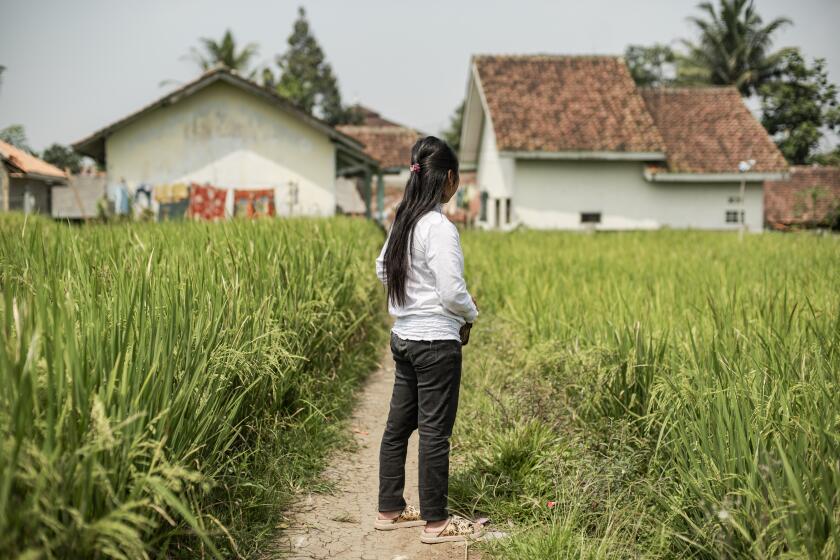Wells are about more than clean water in remote Kenyan villages. They’re also symbols of empowerment
Reporting from Samburu, Kenya — Every day across sub-Saharan Africa, 13.5 million women spend hours searching for water and carrying it back to their families. The water they find is often contaminated with bacteria or viruses that can cause diarrhea, which kills more of the region’s children than any disease.
The women suffer back and neck pain from hauling heavy jerrycans, often while pregnant or with a baby in tow. The daily ritual limits their ability to participate in the economy. Often, their daughters do not go to school so they can help with daily chores like getting water or caring for animals not out to pasture.
The women of Samburu, Kenya, an arid region about 250 miles north of the capital, Nairobi, are luckier than many.
A nonprofit known as the Samburu Project has drilled 84 wells there since 2005, providing clean, accessible water. Each well serves at least 1,000 people.
The wells not only bring health improvements that come with clean water but also economic opportunity for women. Nobody has to walk more than a few miles to reach a well. That’s not far in the nomadic culture. Men trek often for days herding sheep, cattle and goats while women do most everything else.
Having wells nearby means more time for other pursuits, including making beaded jewelry to sell at the market. And daughters who once accompanied their mothers on long walks for water can now attend school.
A community must apply for a well. For each well it approves, the nonprofit must raise $20,000 to drill it. The wells are usually 230 feet deep.
This summer I spent a week in Samburu to meet women there and see how access to clean water had changed their lives.
These women, from the village of Ntilal, are on their way home after a mid-day visit to the well. Mangilan Lebasha, left, and Sophia Lemoyong, center, haul jerrycans filled with clean water. Sophia also carries her daughter Argira. On the right is Sytoon Lelesara. The round-trip took them about an hour. Their well was built in 2013.
Nisalo Leshakwel left her home at 7 a.m. one day to fetch water. By noon, she was almost back home. Her community, Lopusakini, applied for a well to be drilled much closer to it and is well along in the approval process. A hydrogeologist has determined water is available, and if all goes smoothly, the well will be drilled by the end of the year. In the meantime, two donkeys help Leshakwel ease the load, allowing her to bring home two days’ worth of clean water for her family and others in her village.
Mangilan Lebasha, who estimates that she is 42, cooks with clean water in her manyatta, a hut built from sticks, animal skins, cardboard and plywood. Like most Samburu, she has a fire lit in her manyatta that she uses for cooking and preparing the sweet, milky tea that they drink each morning. After breakfast, she boils water to make lunch or dinner for her family, which usually consists of beans or a dense cornmeal called ugali.
After school, children from Ntilal gather at the well to wash, drink and play. The well must be pumped by hand to access the water, a task that is often a team effort for the women and their children.
Iris Schneider is a Times special correspondent
More to Read
Sign up for Essential California
The most important California stories and recommendations in your inbox every morning.
You may occasionally receive promotional content from the Los Angeles Times.










